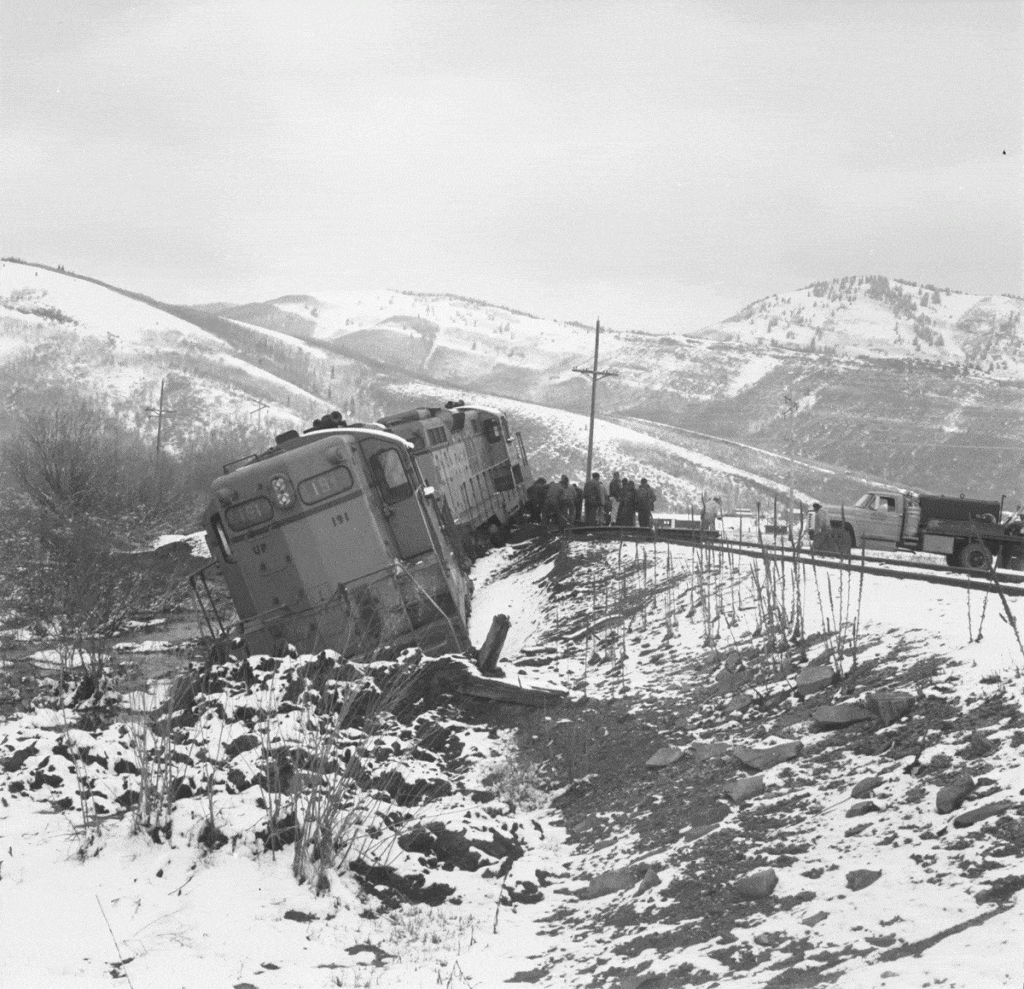Welcome back to the second article on the Friday April 26, 1968 derailment of the Park City local. Last week we looked at the lead-up to that frigid, winter-like Friday. This week we’ll look at the experiences of those who witnessed the nightmare in real time.
The weather pattern of the previous month continued that day. It was unseasonably cold with intermittent periods of heavy rain and snow. Before arriving in town the train was busy setting out and picking up cars in Morgan, Devil’s Slide (the cement plant), Keetley and the Mayflower Mine. Before leaving each location the crew conducted a brake test – a mandatory procedure any time cars are switched. Though the brakes had worked fine, the air pressure indicator gauge began to fluctuate after leaving the Mayflower. Without sufficient air pressure the brake system would fail.
Creeping through town at less than 10 MPH the train announced its arrival by sounding its air horn. Liza Lake, whose house bordered the tracks, stepped outside to wave at the crew as the train passed by. The engineers expressed their appreciation with a couple of short blasts on the horn. Liza went back inside with a smile on her face. Knowing from experience that the train would leave town in about two hours, she made a mental note to catch them again on the way out, around 3pm. But unbeknownst to Liza or anyone else, the train would shortly make an unscheduled and unmanned early departure.
Anticipating the train’s arrival, station agent Fay Dearden made sure the day’s paperwork was in order. The conductor, two brakemen and fireman entered the building after setting the brakes. The engineer remained temporarily in the cab attending to the balky air gauge.
Fay and the crew exchanged pleasantries, discussing the annoying weather, settlement of recent labor unrest, and the day’s switching priorities. During the course of conversation the lead brakeman mentioned the troublesome air indicator gauge. As the conversation ended, the engineer entered the station. Suspicious of the air pressure gauge he suggested another test to ensure the brakes worked.
Fay was looking past the engineer towards the train. At first he could not believe his eyes: the train was moving with not a person on board. This could not be happening, but it was. The nightmare had begun. As the train disappeared from Fay’s vision, pandemonium ensued. In desperation the crew sprinted to catch the train. Their attempt was futile. For anyone who’s walked the rail trail from Bonanza Drive to the former Union Pacific station you are well aware of the ruling grade – it’s downhill.
Over 230 tons of steel was gaining speed. Fay jumped in his car pursuing the runaway train first along Pacific Avenue (a dirt road which paralleled the tracks) then bearing left onto Park Avenue. Thoughts swirling in his mind, none of them good, his immediate concern was how the nightmare might end.
Please return next week for the “smashing” conclusion to our saga.

Credit: Park City Historical Society and Museum, Kendall Webb Collection